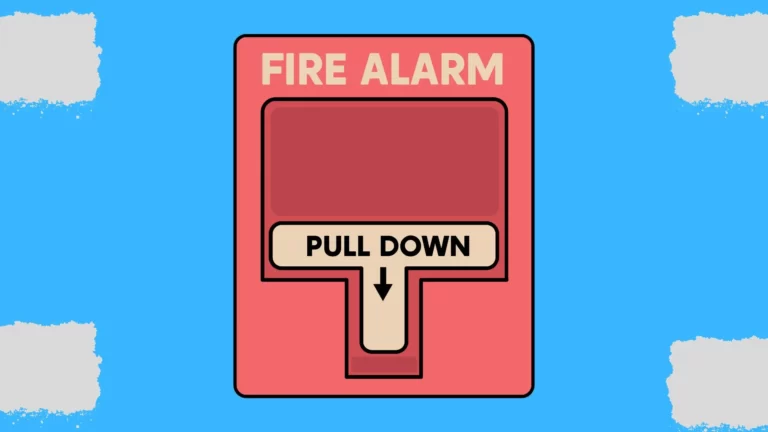Types of Fire Alarm Systems: Your Ultimate Guide
The types of fire alarm systems are conventional, addressable, hybrid, wireless, intelligent, and monitored & unmonitored systems.
Fire alarms are devices designed to detect and warn people about the presence of fire or smoke in a building or area. They serve as vigilant guardians, ready to detect and alert occupants of potential fire incidents in residential and commercial settings. These include homes, offices, schools, hospitals, shopping centres, and industrial facilities.
In Ghana, these systems play an indispensable role in ensuring fire safety, complying with legal regulations, and mitigating the devastating effects of fires.
They provide early warning, allowing people to evacuate safely and promptly, and facilitating a timely response from emergency services.
By providing early warnings, fire alarm systems
- enable people to evacuate safely,
- give firefighting teams a better chance to respond promptly, and
- help reduce injury and casualties during a fire incident.
Conventional Fire Alarm Systems
Conventional Fire Alarm Systems divide the protected area into zones, with each zone having multiple devices connected to it. These devices include smoke detectors, heat detectors, or manual call points.
For example, in a building with multiple floors, each floor may be a separate zone with smoke detectors installed in different areas, such as hallways or rooms.
When a detector within a zone detects smoke or heat or when a manual call point is activated, the system triggers an alarm in that specific zone. The Fire Alarm Control Panel then displays the activated zone, indicating the possible location of the fire.
Pros and Cons of Conventional Fire Alarm Systems
Pros:
Simplicity: Conventional Systems are easy to understand and use, making them ideal for smaller facilities or those without complex fire safety needs.
Cost-Effective: These systems are generally more budget-friendly compared to other advanced fire alarm solutions.
Easy Expansion: Adding new devices to expand the system is uncomplicated, offering flexibility for future upgrades.
Cons:
Limited Location Accuracy: Conventional Systems can identify the activated zone but cannot pinpoint the exact location of the fire within that zone.
Slower Response: Since they don’t provide specific details about the fire’s exact location, response times might be slightly delayed.
Limited Features: Conventional Systems may lack advanced features available in other fire alarm options, such as addressable systems.
If you need the right fire safety equipment for any purpose, kindly consider buying the Neffgo brand. You can find our list of distributors by clicking here.
Appropriate Applications for Conventional Fire Alarm Systems
Conventional Fire Alarm Systems are well-suited for various applications, including:
Small to Medium-Sized Buildings: Such as small offices, retail shops, or residential complexes with uncomplicated layouts.
For example, a small restaurant with a single-floor layout may find a conventional fire alarm system sufficient to cover its fire safety needs effectively.
Budget-Conscious Projects: When cost considerations are essential, conventional systems offer a reliable yet economical solution.
Non-Critical Areas: Areas with lower fire risks, where pinpoint accuracy is not the primary concern.
Addressable Fire Alarm Systems
Addressable Fire Alarm Systems provide precise information about the location of each device connected to the system. Each device, such as smoke detectors, heat detectors, or manual call points, is assigned a unique address. When a device is activated, it sends a signal to the Fire Alarm Control Panel, along with its specific address.
For instance, if a smoke detector on the third floor detects smoke, the addressable system can identify the exact location as “Smoke Detector, Floor 3, Zone B.”
Pros and Cons of Addressable Fire Alarm Systems
Pros
Precise Fire Location: Addressable Systems provide specific information about the activated device’s location, enabling quick response and efficient firefighting.
Early Detection: With accurate data, these systems can detect fires at their inception, potentially preventing small incidents from escalating into significant emergencies.
Reduced False Alarms: The ability to identify the exact location helps minimize false alarms, as issues can be isolated and resolved promptly.
Cons:
Complexity: Addressable Systems can be more complex to install and program, requiring skilled professionals for setup and maintenance.
Cost: These systems are generally more expensive than conventional fire alarm solutions due to their advanced features.
Compatibility: When expanding an existing conventional system to an addressable one, compatibility issues may arise.
Suitable Applications for Addressable Systems
Addressable Fire Alarm Systems are well-suited for a range of applications, including:
Large Buildings and Complex Structures: Such as hospitals, hotels, or universities, where precise fire location is critical for efficient evacuation and response.
High-Risk Environments: Facilities handling hazardous materials or housing valuable assets benefit from the accuracy of addressable systems.
Buildings with Historical or Architectural Significance: In properties where minimizing damage is paramount, addressable systems provide valuable protection.
For example, a modern, multi-story office building housing numerous businesses would greatly benefit from an addressable fire alarm system. In the event of a fire, the system could pinpoint the exact floor and area of concern, facilitating a swift and targeted response.
Hybrid Fire Alarm Systems
Hybrid Fire Alarm Systems integrate the best of both conventional and addressable technologies into a single cohesive system. This combination allows them to leverage the strengths of each type while mitigating their individual limitations.
For instance, in a hybrid system, certain zones may use conventional detection for cost-effectiveness, while critical areas employ addressable devices for precise location information.
The Fire Alarm Control Panel in a hybrid system can simultaneously handle and interpret signals from both conventional and addressable devices, ensuring comprehensive fire monitoring and response.
Combining Conventional and Addressable Features
In Hybrid Fire Alarm Systems, various components are strategically combined to optimize fire detection and response capabilities:
Zone Flexibility: Hybrid systems provide the flexibility to configure zones with either conventional or addressable devices based on specific fire safety needs.
Addressable Devices: Critical areas, where pinpoint accuracy is paramount, may have addressable smoke detectors or heat detectors for accurate location identification.
Conventional Devices: Other areas with lower fire risks or budget constraints may have conventional devices for reliable and cost-effective fire detection.
Best Use Cases for Hybrid Fire Alarm Systems
Hybrid Fire Alarm Systems are ideally suited for a range of applications, including:
Multi-Use Buildings: In properties with diverse occupancy types, such as mixed-use buildings, a hybrid system allows tailored fire protection for each area.
For example, a multi-story building with a combination of residential apartments and commercial spaces can benefit from a hybrid system, customizing fire detection for different zones.
Retrofitting Projects: When upgrading an existing conventional system, hybrid solutions provide a seamless transition to addressable technology without replacing all devices.
Complex Environments: Facilities with intricate layouts, such as hospitals or educational institutions, benefit from the hybrid system’s adaptability to varying fire safety requirements.
For example, a hospital may use addressable devices in critical care units for precise fire location and conventional devices in general wards for more straightforward monitoring.
Wireless Fire Alarm Systems
Wireless Fire Alarm Systems rely on radio frequency communication to transmit signals between various components. Instead of using physical wires, these systems employ wireless devices such as smoke detectors, heat detectors, manual call points, and the Fire Alarm Control Panel.
For instance, when a wireless smoke detector detects smoke particles, it sends a radio signal to the Fire Alarm Control Panel, activating the alarm.
These wireless signals ensure seamless communication, making the system responsive and efficient in detecting potential fire incidents.
Benefits and Limitations
Benefits:
Easy Installation: Wireless systems are quick to install without the need for extensive wiring, reducing installation time and disruptions.
Flexibility: The absence of wires allows greater flexibility in positioning devices, making them suitable for buildings with complex layouts.
Scalability: Expanding the system with additional wireless devices is hassle-free, adapting to evolving fire safety needs.
Limitations:
Signal Interference: Wireless systems may encounter signal disruptions from external devices or physical obstacles, affecting communication reliability.
Battery Maintenance: Regular battery checks are essential to ensure uninterrupted operation, making proper maintenance crucial.
Where Wireless Fire Alarm Systems Excel
Wireless Fire Alarm Systems excel in various scenarios, including:
Historic Buildings: Properties with historical significance may avoid extensive renovations by opting for wireless systems, preserving the building’s integrity.
Temporary or Mobile Structures: Construction sites or temporary events benefit from wireless systems as they can be easily installed and removed.
For example, a temporary exhibition or fair can have a wireless fire alarm system for fire safety during the event’s duration.
Retrofitting Projects: Upgrading an existing building to meet modern fire safety standards can be simplified with wireless systems.
For instance, a commercial building undergoing renovations can opt for wireless fire alarm devices to avoid disruptive construction work.
Intelligent Fire Alarm Systems
Intelligent Fire Alarm Systems are equipped with cutting-edge technology and sophisticated algorithms that enable them to analyze environmental conditions and differentiate between normal and potentially hazardous situations. These systems go beyond traditional fire detection, offering a proactive and adaptive approach to fire safety.
For example, an intelligent system can distinguish between harmless smoke caused by cooking and smoke resulting from an actual fire, reducing false alarms.
Features and Capabilities
Intelligent Fire Alarm Systems boast a range of features that elevate their fire detection capabilities:
Advanced Sensing: These systems utilize advanced sensors to detect various types of fire indicators, including smoke, heat, and carbon monoxide.
Self-Learning Algorithms: Intelligent systems continuously learn from their environment, adapting to changes and improving their detection accuracy over time.
Preemptive Analysis: They can analyze patterns and anomalies, allowing them to identify potential fire risks before they escalate into emergencies.
Ideal Environments for Intelligent Fire Alarm Systems
Intelligent Fire Alarm Systems thrive in environments that demand high levels of fire safety and proactive detection:
Complex Facilities: Buildings with intricate layouts, such as hospitals or universities, benefit from intelligent systems’ ability to adapt to diverse fire risks.
In a university with labs, dormitories, and lecture halls, an intelligent system can tailor fire detection strategies to suit each area’s specific needs.
High-Risk Areas: Environments that handle hazardous materials, such as chemical plants or data centres, require the precision and early warning capabilities of intelligent systems.
Critical Infrastructure: Facilities with vital functions, like power plants or transportation hubs, rely on intelligent systems to ensure uninterrupted operation and safety.
An airport, with its critical role in transportation, can benefit from an intelligent fire alarm system to detect potential fire threats in various terminals and facilities.
If you need the right fire safety equipment for any purpose, kindly consider buying the Neffgo brand. You can find our list of distributors by clicking here.
Monitored vs. Unmonitored Fire Alarm Systems
When it comes to fire alarm systems, two primary options exist: monitored and unmonitored systems.
Monitored Systems: Third-Party Monitoring Services
Monitored Fire Alarm Systems connect to a third-party monitoring service that actively watches over your property 24/7.
In the event of a fire alarm activation, the system sends a signal to the monitoring centre, alerting trained professionals.
The monitoring centre then notifies the relevant authorities, such as Ghana Fire Service, to respond to the emergency. Additionally, they can contact the property owner or designated individuals to inform them about the situation.
Unmonitored Systems: Local Alerts Only
Unmonitored Fire Alarm Systems, on the other hand, do not connect to a third-party monitoring service. When these systems detect a fire incident, they trigger local alerts within the property, such as sounding the alarm and activating strobe lights.
An unmonitored fire alarm system in a small retail store will set off the alarm and flash strobe lights to warn store employees and customers.
However, unmonitored systems do not notify external parties or emergency responders, leaving the responsibility of alerting authorities entirely to the occupants.
Which Option Suits Your Needs?
Choosing between a monitored and unmonitored system depends on several factors:
Level of Protection: Monitored systems provide an extra layer of protection, as they ensure that emergency responders are promptly notified. If rapid response is critical for your property, a monitored system may be more suitable.
Property Size and Occupancy: For larger properties with numerous occupants, a monitored system can help manage fire incidents efficiently. Smaller properties with fewer occupants might find unmonitored systems adequate.
Budget Constraints: Monitored systems often involve ongoing subscription fees for the monitoring service. If budget is a concern, an unmonitored system may be a cost-effective choice.
Responsiveness: Monitored systems offer peace of mind, knowing that trained professionals are handling emergencies. Unmonitored systems require occupants to take immediate action to alert authorities.
If you need the right fire safety equipment for any purpose, kindly consider buying the Neffgo brand. You can find our list of distributors by clicking here.
Choosing the Right Fire Alarm System for Your Property
Selecting the appropriate fire alarm system is crucial for protecting lives and property from the devastating impact of fires. To make an informed decision, homeowners and businesses need to assess their property’s size, layout, occupancy type, and compliance with Ghanaian fire safety regulations.
Assessing Property Size and Layout
Understand the size and layout of your property, as this directly influences the type of fire alarm system needed.
Larger properties with multiple floors and complex structures may require more advanced fire detection technology to cover all areas effectively.
A multi-story office building may benefit from an addressable fire alarm system with accurate location identification, while a small residential home may find a conventional system sufficient.
Considering the Nature of the Occupancy (Residential, Commercial, Industrial)
The nature of occupancy plays a crucial role in determining the fire risks present in your property. Different occupancy types have varying fire safety requirements, making it essential to tailor the fire alarm system accordingly.
A commercial kitchen in a restaurant requires a fire alarm system capable of handling potential grease fires, while an industrial facility dealing with hazardous materials needs specialized fire detection.
Compliance with Ghanaian Fire Safety Regulations
Ghanaian fire safety regulations outline specific requirements for fire alarm systems in different types of properties. Ensuring compliance with these regulations is not only a legal obligation but also a responsible measure to safeguard occupants and assets.
Residential properties, such as apartments or hostels, must adhere to specific fire safety standards to ensure the safety of tenants.
When choosing a fire alarm system, consider seeking guidance from fire safety experts familiar with local regulations and best practices.
Conclusion
In this comprehensive article, we delved into the world of fire alarm systems, equipping homeowners and businesses with valuable insights to enhance fire safety.
Fire safety should be a top priority for every homeowner and business owner. Fires can strike unexpectedly, causing devastation within seconds. Let’s take the knowledge gained from this article and apply it to make informed choices for our fire alarm systems. Together, we can create a safer environment for ourselves, our loved ones, and our community.
If you need the right fire safety equipment for any purpose, kindly consider buying the Neffgo brand. You can find our list of distributors by clicking here.






